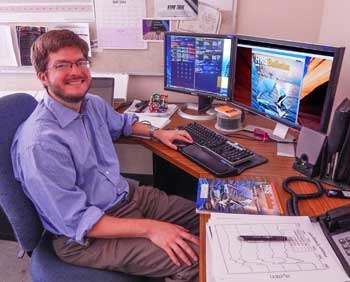Getting more life out of lithium-ion batteries
Your cell phone may stay charged longer due to advances in modeling lithium-ion battery storage capacity.
New research indicates that lithium-ion batteries could benefit from a theoretical model created at Lawrence Livermore National Laboratory and Rice University that predicts how carbon components will perform as electrodes.
The growing demand for energy storage emphasizes the urgent need for higher-performance batteries. Several key characteristics of lithium-ion battery performance -- capacity, voltage and energy density -- are ultimately determined by the binding between lithium ions and the electrode material. Yet subtle changes in the structure, chemistry and shape of an electrode can significantly affect how strongly lithium ions bond to it, in a way researchers don't fully understand.
The new model predicts the strength of this binding based on intrinsic characteristics of carbon materials used as battery anodes.
The research appears in the July 11 edition of the journal Physical Review Letters. Lawrence Livermore scientist Brandon Wood and Rice theoretical physicist Boris Yakobson led the study.
The team's theory included calculations to investigate the interactions of lithium with a wide variety of carbon substrates, including pristine, defective and strained graphene, planar carbon clusters, nanotubes, carbon edges and multilayer stacks.
Lithium-ion batteries are growing in popularity for electric vehicle and aerospace applications. For example, lithium-ion batteries are becoming a common replacement for the lead acid batteries that have been used historically for golf carts and utility vehicles. Instead of heavy lead plates and acid electrolytes, the trend is to use lightweight lithium-ion battery packs that can provide the same voltage as lead-acid batteries without requiring modification of the vehicle's drive system. In addition, Tesla Motors recently announced a plan to build a lithium-ion battery "gigafactory."
Wood and Rice University's Yuanyue Liu, lead author of the study, were looking fora "descriptor," a characteristic that would capture the essential physics of interactions between lithium and a variety of carbon materials.
"The fact that our descriptor predicts the performance of such a wide variety of materials is surprising," Wood said. "It means the underlying physics is really very similar, even if the structure, morphology or chemistry differs from one candidate to the next. It's really a very simple and elegant finding that could accelerate design and discovery."
The theoretical model also provides guidelines for engineering more effective anodes by modifying the electronic and chemical properties of other candidate materials.
Contact
 Anne M. Stark
Anne M. Stark
[email protected]
(925) 422-9799
Related Links
Assessing Carbon-Based Anodes forLithium-Ion Batteries: A Universal Description of Charge-Transfer BindingRice University
Labs characterize carbon for batteries
Heading toward the hydrogen highway
Tags
BatteriesLaboratory for Energy Applications for the Future
Physical and Life Sciences
Featured Articles









